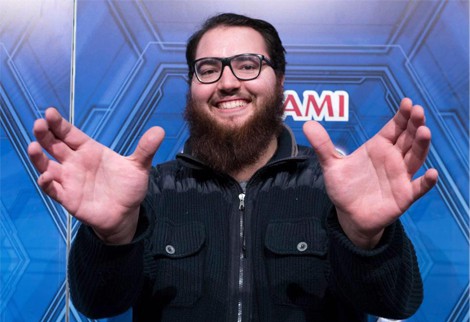This is our fourth article in collaboration with Complexity Card Gaming!
Hi everyone,
My name is Marcello Barberi and for the ones who don’t know me, I’m an Italian player from Complexity Card Gaming, currently I have 14 major tournament tops including first place at YCS London 2014, as well as most recently 4th at YCS Bochum
Today I’m here to talk about ABC, one of the most popular decks of the format, and in particular of my experience with it at the last 2 YCS’s (Liverpool and Bochum) where I managed to Top 8 and Top 4 with it respectively.
I doubt any of you guys reading this don’t know how the ABC deck works, but in case you don’t,  I’m still going to do a short recap.
I’m still going to do a short recap.
The deck’s core is composed by 3 union monsters A-Assault Core, B-Buster Drake, C-Crush Wyvern and a field spell Union Hangar, and the entire strategy revolves around summoning the boss monster ABC-Dragon Buster. That’s an easy task for the deck, as it essentially requires you to only draw a copy of Union Hangar and any rank 4 enabler, such as Photon Thrasher, Silver/Gold Gadget and so on. In fact, this 2 cards combo alone lets you summon Bujintei Tsukuyomi + ABC-Dragon Buster a simple but deadly combo!!
(I have been playing Yu-Gi-Oh! for almost 10 years now and I feel like there were rarely such easy yet powerful interactions.)
Back in October, when the cards were released, right before YCS Liverpool, the other meta decks were quite weaker compared to now so it was pretty obvious that the deck was going to be super popular at the YCS. Either way, I decided to take ABC with me to Liverpool.
This is the deck list I ended up playing, going 10-0 in swiss and only losing to the winner of the event in Top 8.
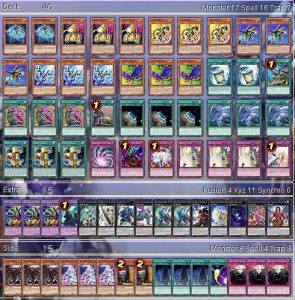
As you can see, I decided to go for a consistent decklist, playing 6 gadgets plus multiple Photon Thrashers. This obviously allowed me to open up ABC Buster Dragon a lot more, considering I also played 3 Terraforming. Essentially doubling my chances to see Union Hangar.
Instant Fusion was also an uncommon choice at the time, which later on became a staple due to its great synergy with the deck, allowing you to both establish a board going first (through Rafflesia especially) and disrupt your opponent going second through the use of Diamond Dire Wolf, Castel and Utopia. Instant Fusion also allowed me to bait my opponents into using their Spell and Trap cards, as well as further extending my own combos.
Surprisingly I didn’t main any cards for going second, for example Dark Hole or Maxx “C”, and I will explain in a second the reason being.
Walking into the event, as I said previously I expected a lot of mirror matches, so I was put in front of a crossroad, main deck a lot of specific hate cards for ABC or play a consistent deck against everyone and side heavily for the mirror. It’s pretty obvious that I went for the second option, looking at my deck list, but I want to note that both strategies could, and were both valid since Thomas Rose ended up winning the YCS with Burning Abyss maining all the hate in the world for ABC (Winter Cherries, Chaos Hunter, etc).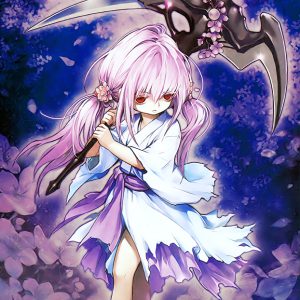
I feel like my strategy was really good and I want to explain to you guys my mindset. I see many players out there underestimating the importance of side deck and losing because of it.
Yu-Gi-Oh matches are played as a best of 3, that means you are most likely going to play 2 out of 3 games with side decks cards in your deck. When you are walking into a large event such as a YCS, you should expect 10+ rounds of Swiss followed by Top 32, and that’s a lot of games! Unfortunately, winning the dice roll is becoming more and more important in the recent formats, so building your deck addressing this problem is a number 1 priority. Many players build their main deck trying to fit multiple “tech cards” for specific match-ups or situations and I feel like that’s the biggest mistake that cost them the top, in fact it leads to inconsistent opening hands and weaker side deck strategies.
Instead, they should address the crossroad I talked about previously and choose a path, which is definitely a hard thing to do because it’s going to involve some risk, but this could make a difference on you managing top and potentially win a YCS, or losing because of it.
So, what does the consistent line-up provide you?
Taking my deck from Liverpool as an example, Game 1 against most match-ups is gonna be about dice roll, with the difference that whenever you do win it, the percentage of unplayable hands is gonna be extremely low, so you are most likely winning. On the other hand, Game 2 and 3 are gonna be quite different, you’ll be able to still have a very consistent deck going first, and the ability to side heavily going second against the most popular decks of the format, it is no coincidence that I won 7/7 mirror matches I played at the YCS. In particular, I was using the entire 15 cards of my side deck in the ABC mirror match depending on who started. 3 Chaos Hunter, 3 Winter Cherries, 2 Maxx “c”, Cosmic Cyclone and 3 System Down whenever I was going second, while the 3 Anti-Spell Fragrances when I was going first.
So, if you don’t already, you should definitely give this approach a try, although I’m not saying it is always going to be the correct thing to do.
What mainly convinced me about the deck for Liverpool were ABC’s popular decklists at the time, in particular the popularity of multiple traps such as Solemn Strike and Bottomless Trap Hole. It meant that whenever I would lose the die roll, I could be staring at ABC-Dragon Buster + Traps, so how exactly would playing copies of Maxx “c” or Dark Hole benefit me? (Assuming I go second.) It seems obvious that they would right? But you’d be surprised. Maxx “c” is usually a strong card against decks that special summons, but the problem was that I tested it out and noticed I would lose the game anyway if they would continue under it to make ABC (that’s only 2-3 special summons) I had no clear way to break such a board in the main deck. Dark Hole on the other hand also had some downsides, especially since I expected a lot of traps. Even if I would destroy a board of ABC+Tsukuyomi with it, any trap would completely stop my turn and my opponent would be able to make an even stronger board next.
In fact, hoping to draw a combination of Twin Twisters, Dark Hole and enough cards to make my own Dragon Buster was just unrealistic and that’s why I moved those cards to the side deck instead.
It is important to change your decklist. To further prove that you should change the approach from tournament to tournament, I’m gonna show you the decklist I played at YCS, Bochum, where I Top’d 4.
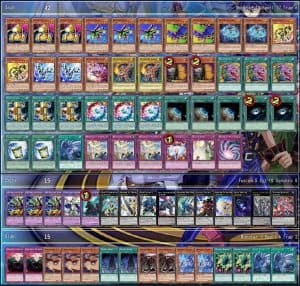
I know what you immediately think… this guy must be crazy?!
He spent time explaining to us why we shouldn’t main Dark Hole or Maxx “C” and he did the opposite thing at the very next YCS?!
YUP!
But I’m asking you to just be patient for a little more and I hope I’ll able to explain why.
First of all, even though only 1 month had passed between the 2 YCS’s, a lot changed. I returned to Complexity Card Gaming and the new set “Invasion : Vengeance” was released, and with it a lot of impactful cards, such as Toadally Awesome and Dimensional Barrier. If the format for YCS Liverpool was quite predictable, that was not the case for Bochum, in fact Metalfoe got a lot better with the new support and Toadally Awesome decks (Paleozoic and Heroes) became a thing. ABC was instead the only deck that basically didn’t receive anything new and people started to consider it the worst option.
So why did I play it?
As always, I tested every deck during the weeks prior to the event and I came to the conclusion that I was gonna play either ABC or Paleozoic. I was not that confident with Metalfoe to consider it and I’m also not the biggest fan of pendulum decks in general, cause although the mechanic is great they have some huge problems dealing with traps like Anti-Spell Fragrance, Solemn Strike and the recent Dimensional Barrier. Paleozoic fascinated me a lot, due to its completely unique mechanics and its ability to play well going second. Unfortunately, I saw that lot of people were going to play the deck in Bochum and I didn’t like the mirror match that much, especially cause we couldn’t find a solution for it after siding, so that’s why in the end, I just played ABC again.
Even though I said that ABC didn’t receive support from the new set, the way the deck played changed a lot. In fact, after Elvis Vu won YCS Anaheim playing Brilliant Fusion ABC, that became the new standard deckli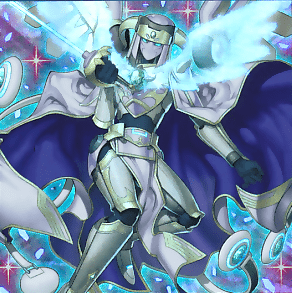 st and you can find many similarities between our lists. The Brilliant Fusion engine was the biggest innovation and although it was already known in Liverpool, it got better as the format developed. ABC’s main weakness was relying too much on the normal summon, so being able to have an additional one thanks to Gem-Knight Seraphinite provided great utility. Performage Trick Clown also has lot of synergy with the deck, since it allows you to summon Bujintei Tsukuyomi, and it is worth noting that every ABC monster is Light attribute, so you can send a missing piece with Brilliant Fusion if needed, essentially Brilliant Fusion acted as a Foolish Burial for the deck.
st and you can find many similarities between our lists. The Brilliant Fusion engine was the biggest innovation and although it was already known in Liverpool, it got better as the format developed. ABC’s main weakness was relying too much on the normal summon, so being able to have an additional one thanks to Gem-Knight Seraphinite provided great utility. Performage Trick Clown also has lot of synergy with the deck, since it allows you to summon Bujintei Tsukuyomi, and it is worth noting that every ABC monster is Light attribute, so you can send a missing piece with Brilliant Fusion if needed, essentially Brilliant Fusion acted as a Foolish Burial for the deck.
The release of Dimensional Barrier led to a change in the typical trap line-up, cause it essentially replaced Solemn Strike. That was the main reason why I decided to main deck a single copy of Twin Twisters only and added in Dark Holes. Outside of Paleozoic, I felt like Twister was too weak, it doesn’t help that much against Metalfoe and in the other matchups its probably just going to hit chainable Dimensional Barriers. The meta became much more about board presence, with Metalfoe and ABC being able to swarm the field through multiple special summons, so that’s why Dark Hole got much better, even against Paleozoic i could just use it to force a Toadally Awesome or to clear a board of multiple Paleozoic traps in main phase 2. The same reasoning applies for Maxx “C”, it became much more versatile across the matchups (especially vs ABC, now that they were all playing Brilliant Fusion) and I could also draw into Dark Hole with it, because of the way ABC works they would have to continue to special summon regardless.
I’m glad that I played this ratio of cards for going second, cause I only won the ridiculous amount of 3 out of 15 die rolls during the YCS and I wouldn’t have been able to make it all the way to Top 4 otherwise.
Since the format changed and I was expecting multiple different decks, the same side deck strategy I used in Liverpool was not applicable anymore and you can see that I went for a standard side deck with 4 to 5 specific cards for each matchup. Chaos Hunters and System Down for the mirror match, Retaliating and Anti-Spell for Metalfoe, Denko Sekka and Twisters for Paleozoic. One final difference from Liverpool was of course the extra deck, cause I had to fit the Gem-Knight Seraphinite for the Brilliant Fusions.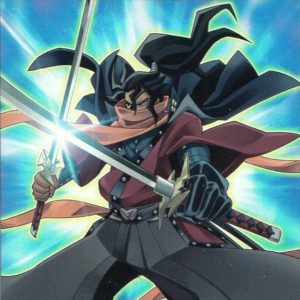
I want to quickly say that, although less impactful, the extra deck is also an important resource that people tend to underestimate. Many players just auto include cards such as Daigusto Emeral without thinking much about it, but I feel like you should give priority to specific cards that in a large tournament are gonna win you games. That’s why I played Cairngorgon Antiluminescent Knight, which is amazing against Paleozoic, and Gagaga Samurai, a card no one else played that alone won me 2 games in Top 32. You can also watch my Gagaga Samurai in action at the first round of YCS Liverpool, here. My opponent proceeded to Maxx “C” me, which in any case would force me to stop playing, but due to the versatility of the card, I was able to OTK him.
So, what’s the future of ABC?
I can’t know for sure, especially cause we should expect the new forbidden and limited list to be released soon, but the deck will probably remain a contender. New cards are coming out in a few weeks and on top of everything, Zoodiac and D/D/D will highly impact the meta. They are both really consistent decks that are able to establish good fields going first (Zoodiac Drancia and Crystal Wing are cards you will get used to seeing) as well as play through backrows going second. That’s why I believe ABC will slowly fade out, but the die hard fans of the deck shouldn’t despair!
 In fact, unless the deck will receive some serious hits in the banlist, I can guarantee it will continue to be a solid choice (going first especially) and possibly a very good sleeper deck in the future if people start to underestimate it. If you want to try out other versions of ABC, a few honorable mentions go to the Empowerement engine (Empowerment and Dragodies), which fixes the problem of drawing multiple Terraforming, and to Torque Tune Gear, which enables Synchro Summons, maybe you guys can make those cards work!
In fact, unless the deck will receive some serious hits in the banlist, I can guarantee it will continue to be a solid choice (going first especially) and possibly a very good sleeper deck in the future if people start to underestimate it. If you want to try out other versions of ABC, a few honorable mentions go to the Empowerement engine (Empowerment and Dragodies), which fixes the problem of drawing multiple Terraforming, and to Torque Tune Gear, which enables Synchro Summons, maybe you guys can make those cards work!
To sum it up, although I didn’t win any of the last 2 YCS’s, I think we can agree that I was pretty successful in both and with 2 very diverse approaches.
I hope I could show you guys the reasoning behind some of my decisions and that you learned something useful by reading this article.
Stay tune and see you guys at YCS Prague!
Marcello Barberi

